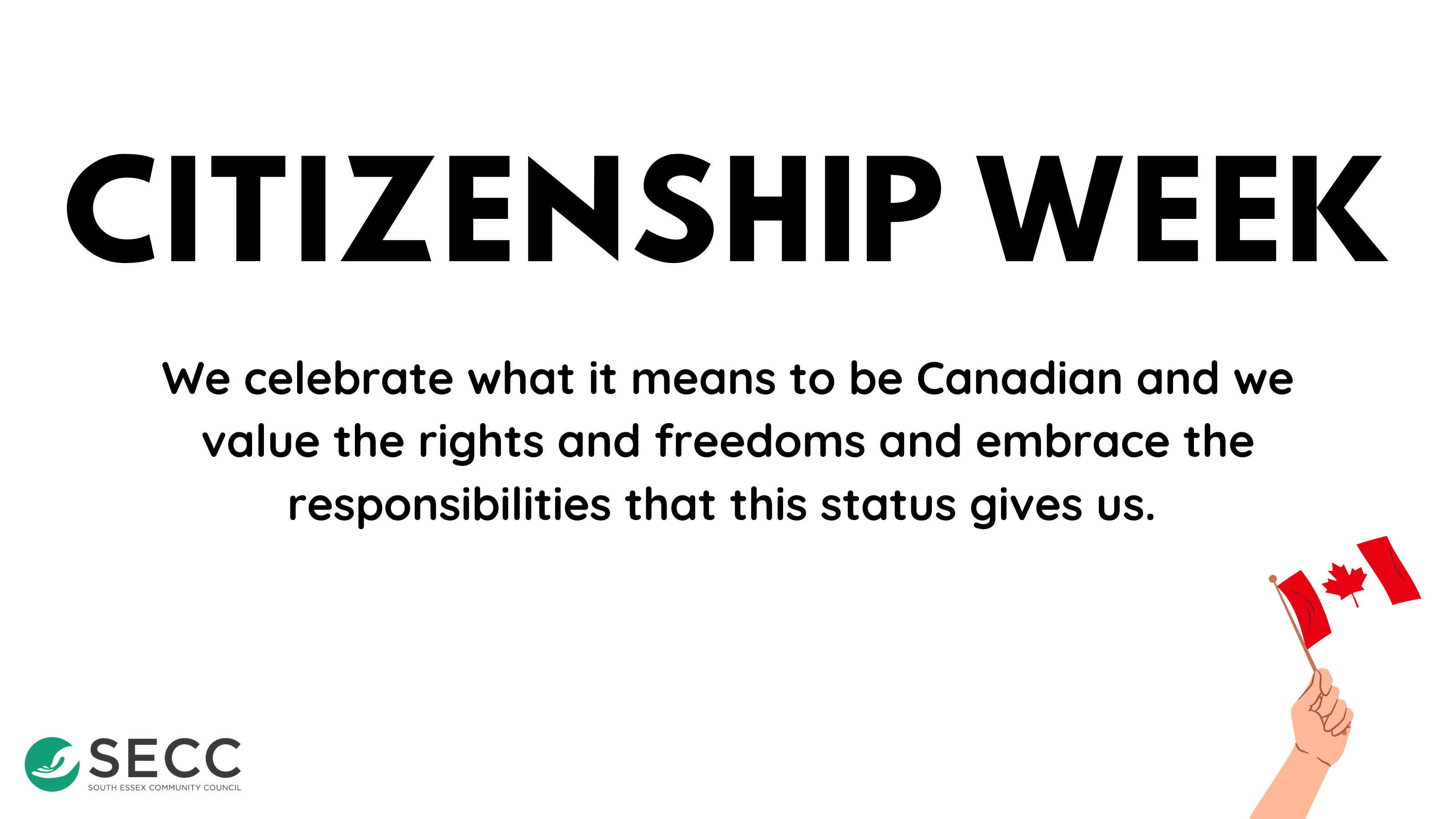Citizenship Week – Test Your Knowledge!
Have you ever wondered what a Canadian Citizenship Test is like? Now is your chance! Check out the questions below and see how you do!
- The Canadian _________ are a part of the Canadian Forces Reserve (militia) that are located in the __________ region.
a. RCMP, Atlantic provinces
b. Rangers, Northern Territories
c. Military, West Coast
d. Artic Forces, Central Canada
- Which of the following in Canada weren’t given the right to vote until 1948?
a. Women
b. Japanese
c. Aboriginals
d. Immigrants
- The Peace Tower of the Parliament Buildings is a monument to what?
a. World War Two
b. Peace between French and English Canadians
c. World War One
d. The War of 1812
- Who was the last Canadian to receive the Victoria Cross?
a. Corporal Filip Konowal
b. Captain Paul Triquet
c. William Hall Horton
d. Lieutenant Robert Hampton Gray
- Which of the following are the responsibilities of federal government?
a. National defense, health care, international trade and Indigenous services
b. National defense, foreign policy, international trade and Indigenous services
c. Education, foreign policy, recycling programs and Indigenous services
d. Highways, policing, international trade and criminal justice
- How is the government formed after an election?
a. The Governor General proposes a plan to form the government
b. The premiers of each province vote for the party to be in power
c. The party with the most elected representatives gains power
d. The Queen selects a party to form government
- What are the three parts of Parliament?
a. The Sovereign, the House of Commons and the Senate
b. The Governor General, the Legislative Assembly and the Senate
c. The Queen, Governor General and Prime Minister
d. The House of Commons, the Legislative Assembly and the Senate
- Who recommended that the Upper and Lower Canada be merged and given a responsible government?
a. Sir George‐Étienne Cartier.
b. Sir Louis-Hippolyte La Fontaine.
c. Lord Durham.
d. Sir Guy Carleton.
- Who was Mary Ann Shadd Cary?
a. An anti-slavery activist
b. The first European woman to settle in Canada
c. She alerted the Canadian forces about an American attack in Canada
d. A famous figure in the Battle of the Plains of Abraham
- Who were the United Empire Loyalists?
a. French-descendants who settled in the Maritime provinces
b. Early British settlers in Canada
c. People who fled to Canada to escape slavery in the United States
d. People who settled in Canada after the American Revolution because they were loyal to the Crown
- The famous D-Day invasion by Canadian forces on Normandy, occurred on what date?
a. June 1st, 1945
b. June 21st, 1944
c. January 20th, 1914
d. June 6th, 1944
- Who is known as the Métis’ greatest military Leader?
a. Louis Riel
b. Sam Steele
c. Gabriel Dumont
d. Louis-Hippolyte La Fontaine
- Which principle was Canada’s constitution founded on?
a. Liberty and pursue of freedom
b. Liberty, equality, and fraternity
c. Independence and freedom
d. Peace, Order and Good Government
- Canada is the only ____________ in North America:
a. Democracy
b. Constitutional Monarchy
c. Monarchy
d. Dominion
- When did the British North America Act come into effect?
a. 1876
b. 1881
c. 2006
d. 1867
- How many Anglophones are there in Canada today?
a. 20 million
b. 8 million
c. 16 million
d. 18 million
- Olympian Marjorie Turner-Bailey is the decedent of what group?
a. Black Loyalists
b. Acadians
c. Ismaili Muslims
d. Polish refugees
- What is the Canadian Constitution?
a. Municipal and local bylaws.
b. A system of laws and conventions which our country governs itself by.
c. The laws which govern the Territories in Canada.
d. The laws which formed the country.
- What important document was signed in 1215?
a. The Bill of Rights
b. The Canadian Charter of Rights and Freedoms
c. The British North America Act
d. The Magna Carta
- What is Habeas Corpus?
a. The right to freedom of conscience
b. The right to challenge unlawful detention by the state
c. The right to physical safety
d. The responsibility to pay your taxes
ANSWERS:
- B – Rangers, Northern Territories
- B – Japanese
- C – World War One
- D – Lieutenant Robert Hampton Gray
- B – National defense, foreign policy, international trade and Indigenous services
- C – The party with the most elected representatives gains power
- A – The Sovereign, the House of Commons and the Senate
- C – Lord Durham
- A – An anti-slavery activist
- D – People who settled in Canada after the American Revolution because they were loyal to the Crown
- D – June 6th, 1944
- C – Gabriel Dumont
- D – Peace, Order and Good Government
- B – Constitutional Monarchy
- D – 1867
- D – 18 million
- A – Black Loyalists
- B – A system of laws and conventions which our country governs itself by
- D – The Magna Carta
- B – The right to challenge unlawful detention by the state

Share This Article
Choose Your Platform: Facebook Twitter Google Plus Linkedin